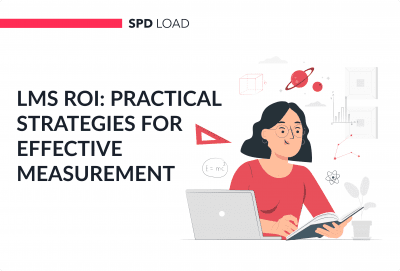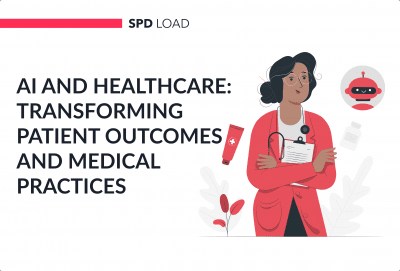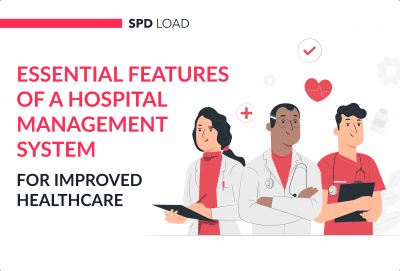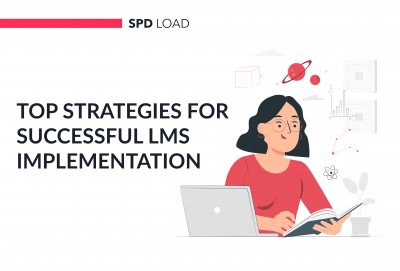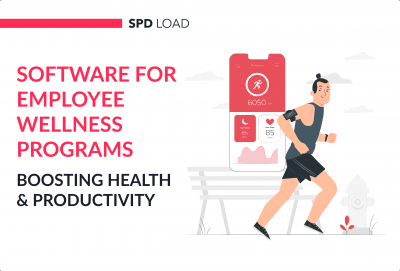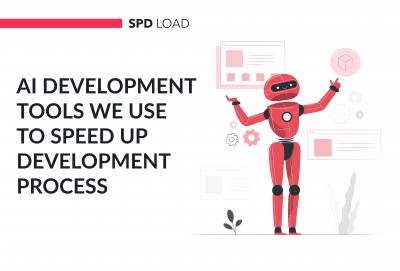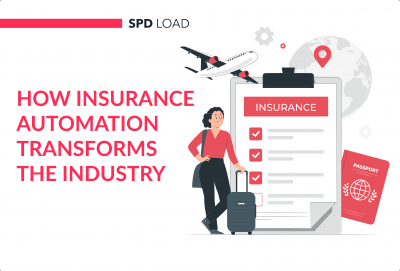Top LMS Integrations for Seamless Learning Solutions
- Updated: Nov 12, 2024
- 10 min
According to Mordor Intelligence, the mobile learning market is booming. It is estimated to be worth $6.08 billion in 2025 and is expected to soar to $230.12 billion by 2029.
This rapid growth, at an annual rate of 24.78%, shows just how important and popular mobile learning is becoming.
Whether you are thinking of developing your own custom LMS or already have one, adding LMS integrations can help you tap into this expanding market and achieve great new milestones.
It is important to understand how to integrate your learning management system (LMS) with other business software. It is key to measuring the success of your learning and development programs.
In this article, we’ll explore the benefits LMS integration brings to you.
We’ll also look at common examples of LMS integrations and provide tips on implementing them securely and easily.
Ready to enter the education tech field? Feel free to discover EdTech startup ideas that can change how people learn and grow.
Fuel your startup's growth with tailored mobile apps.
What is LMS Integration?
We will start with identifying what LMS integration is.
LMS integration is the process of connecting a Learning Management System (LMS) with other software to ensure they work together seamlessly. This is an essential part of the e-learning app development services we provide.
It allows for automating many repetitive tasks and combining useful data from other software with your training and vice versa.
This is important because it allows different systems, such as student information systems or content management platforms, to share data effortlessly.
Here’s how it works:
Imagine a school where the student enrollment system and the learning platform are connected.
When new students enroll, their information automatically appears in the learning system without anyone needing to enter it twice. This saves time and avoids mistakes.
Another example is linking the learning management system with Zoom so that students can join their online classes with just one click from the training platform.
This makes things simpler and more convenient for both teachers and students.
It’s like having all your tools in one place, working together to make teaching and learning easier.
LMS integration frees up time for educators to focus on teaching and students to focus on learning. However, there are many more benefits it offers.
Next, we check them out.
Benefits of LMS Integrations
Your LMS can extend the reach, speed and impact of your training program.
The success of your new LMS depends on how well it fits with your existing systems.
LMS integration has many benefits that will increase efficiency and user experience.
- It eliminates duplication of admin across different software.
This saves time on repetitive learning and development tasks. Less manual data entry and errors means more time for other things.
- It increases user adoption.
When an LMS integrates with tools learners already use they see the value quicker. This motivates them to use the LMS as part of their daily routine, making learning a part of their workflow.
- The learning curve is shorter with integrations.
Learners already familiar with existing software don’t need to start from scratch. They can get up to speed faster, so they can focus on new content rather than new systems.
- And compliance.
Linking HR systems to the LMS streamlines workflows and sends reminders for refresher training or re-certifications automatically. So employees stay up to date with required training without constant manual oversight.
Check out these best HR software solutions that simplify HR tasks and improve productivity.
- More alignment between learning and business performance.
For example, integrating the LMS with CRM software allows teams to link performance data to learning activities. If sales performance drops the LMS can automatically assign relevant training to help improve results.
Explore how CRM in recruiting can transform your hiring process and improve candidate relationships.
- Team collaboration.
Syncing the LMS with collaboration and video conferencing tools simplifies communication. Employees can focus on their work without switching between multiple corporate tools, increasing productivity and teamwork.
- Integrations allow the LMS to pull data from multiple sources.
This leads to deeper insights from reporting and learning analytics, ultimately providing a better return on investment. 
There are many types of LMS integrations. Let’s see.
Types of LMS Integrations to Enhance Learning Experiences
If you are developing an LMS from scratch or improving an existing one, you should know what types of integrations learning management systems can work with.
This knowledge lets you pick the best tools to improve your learning system.
Each type we are going to explore brings its advantages, making everything run more smoothly and improving the experience for everyone involved.
Single Sign-On (SSO) Integrations
SSO integrations make logging in easier by using the same login credentials across multiple systems.
For example, when a student logs into the LMS, they can use the same login to access their email, library resources and other educational tools without having to log in multiple times.
This makes it easier for students and teachers to use different platforms without having to log in multiple times and reduces password fatigue.
Content Authoring Integrations
Integrations for content creation link the LMS with tools for creating educational content such as quizzes, lessons and interactive activities.
For example a teacher can use a content authoring tool like Articulate Storyline to create a multimedia lesson and publish it straight to the LMS.
This means all educational resources are in one place, organized for teachers and accessible for students to course materials.
Integrations between different video conferencing tools for collaboration.
Integrations for video conferencing connect the LMS to platforms like Zoom or Microsoft Teams so students can join live online classes from the LMS.
When a class is scheduled students are notified and can join by clicking from within the LMS interface.
This combines the organized LMS content with live instruction’s interactive features to create a seamless learning experience.
Video Conferencing Integrations with Video Conferencing Tools
Video conferencing integrations connect your LMS to platforms like Zoom or Microsoft Teams so students can join live online classes from the LMS.
When a class is scheduled students get a notification and can join by clicking from within the LMS.
This combines the structured content of the LMS with live instruction’s interactive features to create a seamless learning experience.
It makes remote learning more engaging and effective so students can participate and stay connected with their instructors and peers.
Learning Record Store (LRS) Integrations
Learning Record Stores (LRS) store learning records, report against them and export raw learning data.
Note LRSs don’t replace LMSs but provide new capabilities with the Experience API (xAPI).
This allows for full reporting and analysis of learning data.
For example, an LRS can track a learner’s progress across multiple platforms and collate this data into one report to give insights into learning behaviors and outcomes.
This integration gives deeper analytics and helps educators see how students interact with learning content.
Customer Relationship Management (CRM) Integrations
Customer Relationship Management (CRM) LMS integrations connect your LMS to systems like Salesforce or HubSpot that manage interactions with clients and customers. This integration links learning activities to customer data to boost learning and business outcomes.
For example if your sales team need training on a new product the LMS can use data from the CRM to identify who needs the training and track their progress.
This means the training is always relevant and timely so your sales team is more effective. It also aligns learning to business goals so your team stays up to date and performs better.
This guide to choosing the best recruitment CRM highlights top features that improve hiring efficiency.
Human Capital Management (HCM) Integrations
Most businesses integrate HR solutions for enhanced human resource management systems.
These tools empower HR departments to manage employee data and automate daily administrator tasks, being huge timesavers for busy teams.
When an LMS is integrated with an HR system, all of the employee information is consolidated in a single location, making it easier to access. In this article, we break down the cost to build your own HR software, from essential features to advanced integrations.
Having an LMS integrated with your HRIS means that every new hire or role change will automatically be recorded in the LMS.
A new employee can be enrolled in the LMS for necessary training (for example, employee onboarding, compliance training, etc.). At the same time, HR tools can be used to monitor employee training progress. 
How Does LMS Integration Work Technically?
There are five main technologies for LMS integrations: APIs, single sign-on, middleware, webhooks, and plugins.
They work like this:
APIs (Application Programming Interfaces)
APIs are bridges that allow different software to talk to each other.
When the LMS uses APIs, it can send and receive data from other systems.
For example, an API can let the LMS pull student information from a school’s database or send grade updates back to it.
Single Sign-On (SSO)
SSO is a feature that lets users log in once and access multiple systems without needing to log in again.
Technically, SSO uses a centralized system to verify user credentials, and once verified, it grants access to all connected systems, including the LMS.
There are plenty of SSO standards: OAuth 1 & 2, OpenID Connect, SAML, LDAP, and more.
You don’t have to go too deep in there, but just realize that there are many different technologies for SSO.
Middleware
Middleware is a software that acts as a middleman between your LMS and other services.
When your LMS doesn’t support many integrations, middleware can help by connecting your LMS to various apps.
You can use middleware if you want to integrate your LMS with Zoom, PayPal, and Dropbox, but your LMS doesn’t support these integrations.
The middleware app will connect your LMS to all these services, making it work seamlessly with them..
Webhooks
Webhooks are like the opposite of APIs.
While the application programming interface pulls data when needed, webhooks push data automatically when an event happens, like when a user logs in or a payment is received.
This means the app sends data to the LMS without waiting for the LMS to request it, making webhooks “backward APIs.”
The big advantage of webhooks is that they work in real-time, instantly sending data without needing approval from the other app.
However, they can only send data one way, unlike APIs that allow for two-way communication.
This makes webhooks ideal for handling large amounts of data quickly, perfect for things like sending notifications, integrating analytics services, or triggering actions based on events.
Plugins and Extensions
These are add-ons that enhance the LMS’s capabilities by allowing it to work with other tools.
LMS integration uses these technical methods to ensure that all ed tech tools and systems work together efficiently, providing a seamless user experience.
If you are eager to learn more about developing e-learning systems, check out our guide on education app development. 
What are the Challenges of LMS Integrations?
While LMS integration has numerous advantages, it’s not without its challenges.
Integration can be costly if you aren’t working with an LMS solution designed for integration into your current web development stack.
The cost of integration varies widely, depending on the size of your organization and the complexity of the systems and data you need to integrate.
Technical complexity is another consideration.
Integrating different systems can require custom solutions, which can be time-consuming and expensive if you need to pay for technical expertise.
Compatibility can become an issue as apps and platforms update, too. When software updates, the integration may also need an update. This can require ongoing maintenance from a dedicated development team to ensure your LMS functions correctly.
You’ll also need to keep data security in mind, as integration allows data transfer between systems, some of which might contain sensitive employee information.
You’ll need to ensure the integration isn’t violating any data security regulations and that appropriate measures are in place to protect information.
Protecting student privacy is more than just a legal requirement; it’s about trust and responsibility. Learn what is FERPA compliance and how it helps institutions uphold these values.
Explore our guide to cybersecurity trends and see what your organization needs to stay secure.
There is also a potential challenge in user adoption.
Even though LMS systems are the perfect way to create personalized learning paths, employees need training on using the LMS system. It can take time for them to adjust to new workflows, especially if the UI isn’t intuitive.
Explore our UX&UI design services
Despite these challenges, LMS integration can significantly benefit organizations that want to improve their training workflows and employee skill sets.
You can overcome many of these challenges by choosing an LMS with built-in integrations for your tech stack. Discover how to choose a tech stack with our expert advice.
Implementing LMS Integrations in Learning Management Systems
It is clear that LMS integrations are essential for creating a seamless learning experience and improving business operations.
With the right LMS implementation strategies, you can enhance data capture, improve compliance, and provide personalized learning experiences.
While it can come with challenges, the rewards greatly outweigh the issues.
And choosing an LMS with integration built into its DNA helps you get all those benefits without any manual coding or technical expertise.
This is when our team at SpdLoad can be helpful.
We can help you develop a comprehensive LMS system with a wide range of built-in integration options and a user-friendly interface for creating and delivering engaging content.
Interested in learning more about our expertise in the industry? Check out this case study, where we dive into elearning management system development.
Ready to create seamless learning experiences for your employees, trainers, and stakeholders?
Empower your team to learn collaboratively through upskilling from within.
Let’s get in touch to see how we can help you create a more impactful learning environment.
Want to build a productive remote team? This guide on high-performance remote teams shows you how.




